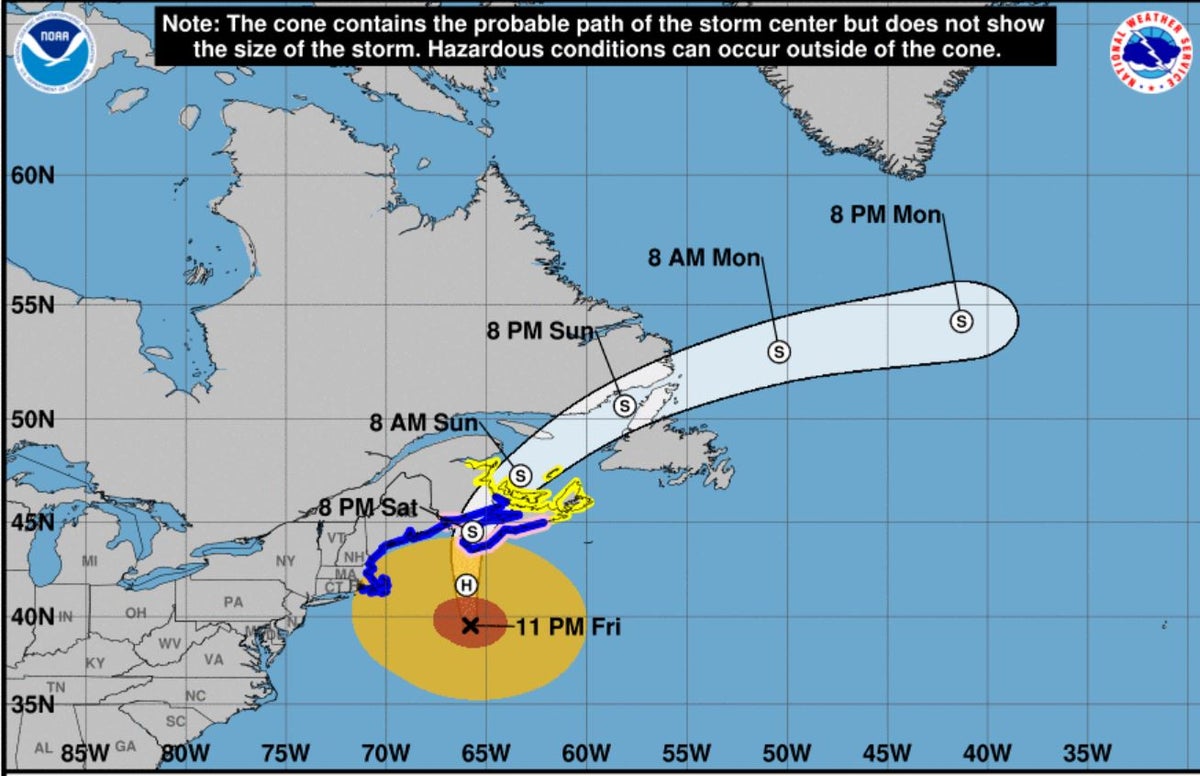
Hurricane Lee made landfall in Western Novia Scotia on Saturday, as millions in New England and Canada have been preparing for its devastation.
Maximum sustained winds were at 70mph, as of 4pm when the storm reached land about 50 miles from Eastport, Maine and about 135 miles from Halifax, Nova Scotia, according to the National Hurricane Center.
Since Saturday morning, hurricane-force winds, heavy rains, and coastal flooding have affected regions along the East Coast. The National Hurricane Center said at 8am on Saturday that the maximum sustained winds reached 80mph.
“Lee is expected to be at or just below hurricane strength when it reaches Nova Scotia later today,” the NHC wrote, adding that the storm is predicted to weaken into tonight and Sunday while Lee moves across the border.
Earlier on Saturday, the storm had been downgraded from a hurricane to a post-tropical cyclone.
Both Maine and Massachusetts issued states of emergency on Friday. This was the first hurricane watch that Maine issued in 15 years.
Hundreds of thousands have been dealing with no power. As of Friday, 30,000 in Maine and 130,000 in Nova Scotia were experiencing power outages. Given Maine’s heavy forestation, downed trees could also contribute to more outages — and damage to buildings.
At 8am on Saturday, the National Hurricane Center predicted that rains would lead to some flooding. “Through tonight, Lee is expected to produce rainfall amounts of 1 to 4 inches over far eastern Massachusetts, eastern Maine, western Nova Scotia, and New Brunswick. This may produce localized urban and small stream flooding.”
On top of this, a storm surge and tide “will cause normally dry areas near the coast to be flooded by rising waters moving inland from the shoreline,” the hurricane center warned.







